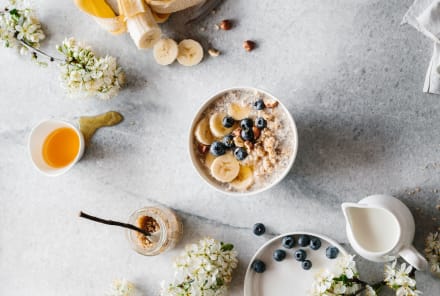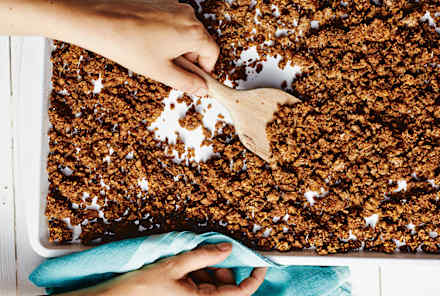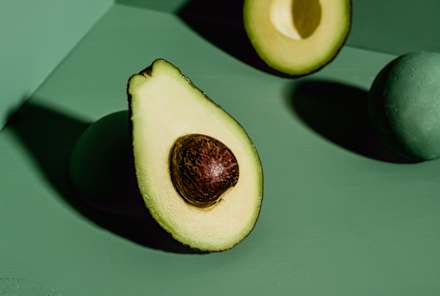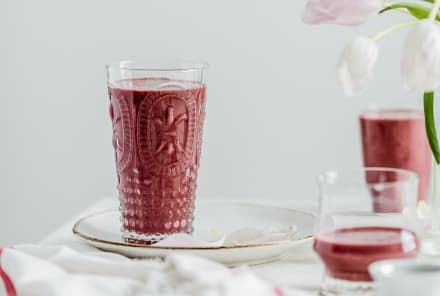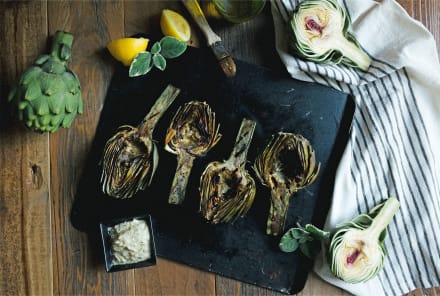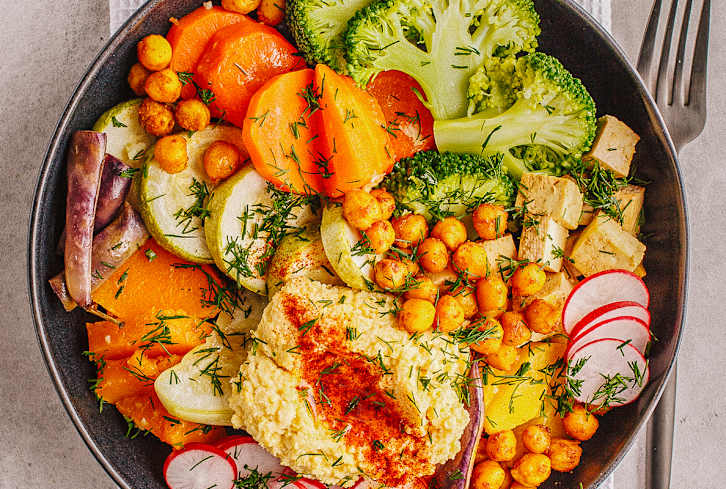Advertisement
This Weird Ingredient Is The Secret To Healthy Keto & Vegan Baking


Given the rise in both keto and plant-based diets, you're probably starting to notice psyllium husk pop up in more and more recipes (like this viral Life-Changing Loaf recipe from My New Roots). And I can attest, it's a pretty magical ingredient with a unique function and purpose that can help you make a number of better-for-you baked goods.
What's more, psyllium is ridiculously healthy, too, given its sky-high fiber content, which is why some people use psyllium husk powder as a dietary supplement to promote regularity, balance blood sugar, and lower cholesterol.
Here, discover how psyllium can not only transform your next recipe but boost your overall health as well. Plus, scroll all the way down for a whole-foods-based (and flour-free!) bread recipe featuring psyllium that you're about to be obsessed with.
First, what is psyllium husk?
Psyllium husk is a soluble fiber that is derived from the seeds of a shrub-like plant called Plantago ovato (the husk is simply the outer casing of the seed). Traditionally, psyllium has been used for medicinal purposes in both ayurveda and Chinese medicine to treat heartburn, absorb and flush toxins from the body, and manage type 2 diabetes and other conditions. Today, it's largely used as a natural way to promote regularity and, increasingly, as a baking ingredient.
Because psyllium husk is a significant source of fiber—7 grams per tablespoon, or 25% of your daily value—it's frequently ground up into psyllium husk powder and used as a laxative (it's actually the main ingredient in the stool softener Metamucil). More specifically, psyllium is known as a bulk-forming laxative, which means it absorbs liquid and swells to form a gel. Without getting too literal, this gives your stool more bulk and mass and helps get things moving through the digestive tract.
Psyllium husk health benefits.
In addition to keeping your bowels running smoothly (helping combat both constipation1 and diarrhea2), psyllium husk has a number of potential health benefits thanks to its high fiber content and ability to resist digestion. The main perks include lowering cholesterol, balancing blood sugar, and acting as a source of fuel for good bacteria in the gut.
In one study3, participants who received 3.4 grams of psyllium husk at meal times (three times per day) over the course of eight weeks experienced a 14.8 percent drop in total cholesterol and a 20.2 percent drop in "bad" LDL cholesterol. Psyllium husk also helps slow down the digestion of food, which helps buffer potential blood sugar spikes and lower overall blood sugar levels, with one study4 finding that people with type 2 diabetes who consumed 5 grams of psyllium husk three times per day for six weeks experienced a 29 percent drop in blood sugar.
Additionally, while much of psyllium is resistant to digestion, small amounts are fermented by intestinal bacteria (meaning, it's a prebiotic), which in turn results in the production of beneficial short-chain fatty acids, which help reduce inflammation, nourish intestinal cells and even boost nutrient absorption from the food you eat.
Psyllium husk side effects.
When taken as a supplement, or consumed in large amounts in baked goods, there are precautions to keep in mind. Due to its high fiber content, psyllium can cause side effects like bloating, abdominal discomfort, nausea, vomiting, and diarrhea and can interact with some medications (as a supplement, it's not recommended to take with medications). And even though psyllium is used to treat constipation, it can also cause or worsen constipation if consumed without proper hydration. It's also rare but possible to have an allergic reaction to psyllium.
Psyllium supplements (either as capsules or a loose powder) are generally found in pharmacies, the supplement aisle of your grocery store, or online. If you're looking to take psyllium as a supplement to promote good digestion, balance blood sugar, or lower cholesterol, the appropriate dosage may vary, but most research suggests that 5 grams three times per day is safe and effective. But, as with any supplement, consider consulting a medical professional before adding psyllium husk to your routine.
How to use psyllium husk in the kitchen.
If you avoid eggs, gluten, and/or prefer to eat a low-carbohydrate diet but still want to include foods similar to bread, flatbread, wraps, muffins, or burger buns, then psyllium husk might be a useful addition to your pantry.
Psyllium's ability to absorb liquid is also responsible for its transformational action in the kitchen. When psyllium husk is mixed with water and is allowed to sit for a few minutes, it develops a thick, mucilage-like consistency and this "gel" acts like a binder in baked goods. This is exactly why psyllium has risen in popularity as a key ingredient in healthy baking.
As a baking ingredient, you'll find psyllium husk in two main forms—whole psyllium husk and psyllium husk powder—which are most often packaged in bags or containers and found in health food stores, pharmacies, organic sections of supermarkets, and online.
Not all psyllium is created equal, however. Recipes that feature psyllium will call for psyllium husk powder or whole psyllium husk (which resembles small flakes). Psyllium husk powder is simply ground whole psyllium husks, but they're not directly interchangeable. You'll find a range of conversions, but in my experience 4 teaspoons of whole psyllium husk is equal to 3 teaspoons of psyllium powder. You can grind whole psyllium husks into psyllium powder by using a coffee grinder if the conversion math gives you a headache.
Using psyllium as a binder makes it a great substitute for eggs in vegan recipes. To replace eggs, use this formula: ¼ cup water + ½ teaspoon psyllium husk powder = 1 egg. It also helps with texture, pliability, and binding in gluten-free baking; and because psyllium is low in absorbable carbohydrates, it has become valuable in keto recipes as well. As you can tell by now, psyllium is somewhat of a dietary chameleon.
Easy Psyllium Nut & Seed Bread
Intrigued by psyllium husk and want to try it out in a recipe? This bread is vegan (psyllium acts as a binder and replaces the egg), gluten-free, flourless, and oil-free but still manages to somehow be totally delicious. Slather it with some mashed avocado for a nutrient-dense snack. Keto more your style? Try this low-carb bread recipe made with psyllium husk powder, almond flour, flax, and eggs.
Ingredients
- ⅓ cup whole psyllium husk
- ⅓ cup unsweetened apple sauce
- 2½ cups gluten-free old-fashioned rolled oats
- 1 cup chopped walnuts
- ¾ cup sunflower seeds
- ¼ cup chia seeds
- ¼ cup whole flaxseed
- ¼ cup white sesame seeds
- 1½ teaspoons salt
Method
- Line an 8.5-by-4.5-inch loaf pan with parchment paper.
- In a medium-sized bowl mix together the psyllium husk, 2¼ cups of water, and the applesauce, and set aside to thicken for about 5 minutes. This mix will develop a thick, gel-like consistency.
- In a separate large bowl, mix all the remaining ingredients (oats through salt).
- Once the psyllium mix is thickened, add it to the bowl of dry ingredients. Mix together using a silicon spatula or roll up your sleeves and mix together with clean hands. The resulting mixture will be very thick and dense.
- Transfer the mix to the parchment-lined bread pan, and smooth out the top using a spatula.
- Cover the pan with a clean dish towel and set aside on the counter for an hour (or overnight, if covered in the fridge).
- Preheat the oven to 350ºF (~175ºC) and position the oven rack to the middle of the oven. Uncover the pan and bake for 55 to 60 minutes.
- When bread is brown and firm to the touch, remove from the oven and let cool completely.
- When the bread is completely cool, remove it from the pan and transfer it to a cutting board. Use a sharp chef's knife to cut the bread into 10 to 12 slices. Do not use a serrated knife as this will rip the bread.
- Store this bread in the refrigerator for 3 to 5 days. It makes for a nutrient-packed version of avocado toast or a great base for nut butter and sliced bananas.

